Tokenization on Cronos
What is Tokenization
Tokenization is a process of creating digital representations of various assets on a blockchain. These assets can be physical, such as real estate or art, financial, such as stocks or bonds, or intangible, such as intellectual property or data. The assets are represented in the form of digital tokens that can be traded, verified, and secured on a decentralized network. Tokens can be fungible or non-fungible, depending on their design and function. Tokenization is part of Web3, which aims to make online space more open, transparent, and democratic.
Cronos as tokenization platform
What is Cronos
Cronos is a smart contract-enabled blockchain that aims to provide a faster and more efficient solution for developers building decentralized applications (dApps) on the blockchain. It is built based on the Cosmos SDK or the Ethermint network and is designed to be one of the few blockchains interacting with Ethereum and the Cosmos ecosystem.
Benefits of Cronos
- Low transaction fees: Cronos boasts low-cost transactions, mostly around 0.02 USD.
- Fast network speed: Cronos is one of the fastest EVMs today, with the NEAR Protocol finalizing blocks in 1 to 2 seconds.
- Easy asset transfer: Cronos has developed its own Rainbow Bridge between the Ethereum, NEAR, and Cronos blockchains, ensuring easier asset transfer.
- EVM compatibility: Cronos is compatible with the Ethereum Virtual Machine (EVM), which means that developers can easily port their existing Ethereum dApps to Cronos.
- High scalability: Cronos is designed to handle high transaction volumes, with a capacity of up to 50 million transactions per day.
Create a token on Cronos
There are multiple ways to create and deploy a token on Cronos. The easiest one is to use a software such as the Cryptix Tokenlaunchpad. The benefits of using such a software are:
- Easy creation and deployment of tokens: You can configure and deploy tokens, even if you don’t know about Solidity, Vyper or any other programming language.
- Browser Wallet Integration: Deployment will be done via a browser wallet (e.g. Metamask). This allows to deploy tokens with your preferred hardware wallet as e.g. Metamask support Ledger, Trezor, Lattice and others.
- Predefined Token Features and Networks: The Token Launchpad supports multiple networks and different Token Standards such as ERC-20 or ERC-1400.
- Speed: Creation and deployment can be done in less than a minute.
- Secure Smart Contracts: The Tokens created via the Tokenlaunchpad are implemented in a secure way and according to industry standards.
Another way is to develop your own token using Solidity and a development environment such as hardhat. The benefits of this method are:
- Flexibility: You have full control of the smart contract and therefore, you can implement every type of token and functionality you need.
- Automation: Using a coded deployment also allows you to deploy multiple different tokens in a row or do any other automation you need.
Create a Token on Cronos using Cryptix Tokenlaunchpad
In order to deploy a token via https://app.tokenlaunchpad.eu/ you need to have a browser wallet (e.g. Metamask: https://metamask.io/) installed in your browser with some funds on it. The Tokenlaunchpad also supports testnets which you can use for testing and demo purposes. If you need funds for a testnet, just search for “Cronos Faucet”. To deploy the token, follow these 4 simple steps:
- Choose Cronos as the Blockchain network and click Connect.
- Pick the token type, opting for either a Generic ERC-20 token or an ERC-1400 security token.
- Provide the necessary details in the token parameters form.
- Initiate the deployment process and authenticate the transaction through Metamask by signing it.
Create a Token on Cronos using Hardhat
- Create a new directory e.g. ‘my-token’, navigate to the new directory and run
npm init -y - Install required packages using
npm install --save-dev hardhat @nomicfoundation/hardhat-toolbox @openzeppelin/contracts - Run
npx hardhat initto set up a new hardhat project and select “Create an empty hardhat.config.js”. - Modify the hardhat.config.js file to include the necessary plugins and configurations as below and fill in your private keys.
require('@nomicfoundation/hardhat-ethers');
module.exports = {
solidity: {
version: '0.8.20',
},
networks: {
mainnet: {
url: 'https://cronos-evm.publicnode.com',
accounts: ['0xYOUR_PRIVATE_KEY'],
gasPrice: 20000000000, // 20 Gwei
},
testnet: {
url: 'https://evm-t3.cronos.org',
accounts: ['0xYOUR_PRIVATE_KEY'],
gasPrice: 20000000000, // 20 Gwei
},
},
};
- Create a new directory with the name
contracts, and in it, a new Solidity file, e.g., MyToken.sol and paste the below code into it.
// SPDX-License-Identifier: MIT
pragma solidity ^0.8.20;
import "@openzeppelin/contracts/token/ERC20/ERC20.sol";
contract MyToken is ERC20 {
constructor(uint256 initialSupply) ERC20("MyToken", "MTK") {
_mint(msg.sender, initialSupply * 10**18);
}
}
- Run
npx hardhat compileto compile the smart contract. - Create a deployment script (e.g., deploy.js) in a new directory called
scriptsand paste the below code into it.
async function main() {
const [deployer] = await ethers.getSigners();
console.log("Deploying contracts with the account:", deployer.address);
const MyToken = await ethers.getContractFactory("MyToken");
const token = await MyToken.deploy(1000000); // Deploy with an initial supply of 1,000,000 tokens
console.log("Token deployed to:", token.address);
}
main()
.then(() => process.exit(0))
.catch((error) => {
console.error(error);
process.exit(1);
});
- Execute the deployment script using
npx hardhat run scripts/deploy.js --network testnetto deploy and create your token on the Cronos test network. - Check if everything is correct. If your token is ready to release, execute:
npx hardhat run scripts/deploy.js --network mainnet
